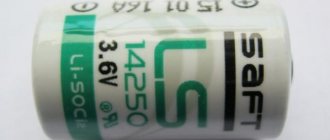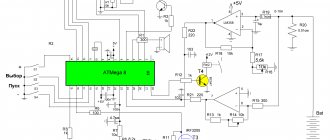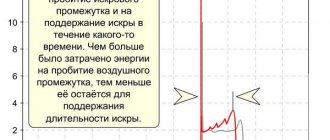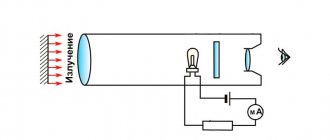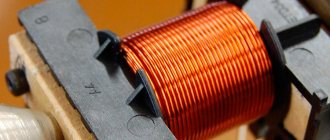What is a UPS and what types are they?
A UPS (or UPS) is a power backup device that ensures continuity of power supply during a power outage.
Every year in our country, uninterruptible power supplies are becoming more and more popular not only among rural, but also urban residents. This trend is primarily associated with the emergence of electrical appliances and equipment, which are especially demanding in terms of the quality of power supply.
Considering the variety of UPS types and features of their operation, it is obvious that the technical characteristics of the selected model must comply with the requirements of electrical appliances for mains voltage.
According to the International Standard IEC 62040-3 Uninterruptible Power Supply Systems (UPS), devices are classified as follows according to their design:
- backup (off-line or standby);
- line-interactive;
- double conversion (on-line).
Depending on the operating voltage of the load, UPSs can be single-phase (for powering single-phase consumers) and three-phase (for powering three-phase and single-phase consumers in three-phase group networks).
Also, an important parameter of the power source is its design, which depends on the purpose, power and operating time in autonomous mode, for example:
- low-power devices are available in wall-mounted, monoblock floor-standing (tower) versions, and also have standardized dimensions for placement in 19-inch racks and cabinets;
- Uninterruptible power supplies of medium and high power are available in monoblock floor-standing or cabinet designs, as well as in versions for placement in standard 19-inch racks and cabinets.
How to choose a UPS for your computer
To correctly select an uninterruptible power supply that is ideal for maintaining the functionality of your computer, you need to take into account some of the characteristics of the device.
By power
An important characteristic of an uninterruptible power supply is power; the reliability of protection against voltage surges and service life depend on it:
- Apparent power is measured in VA and characterizes the maximum amount of power that can be connected to an uninterruptible power supply.
- Active power is measured in W - this is the maximum power of devices connected to the UPS. The power of the uninterruptible power supply should be 20-30% more.
We calculate the total active power of the equipment that we plan to connect to an uninterruptible power supply, add thirty percent to this number and determine the power of the UPS. For example, the power of a home PC is 420 W and the power of a monitor is 45 W - a total of 465 W, which means you will need a UPS with a power of at least 600 W.
What does a UPS consist of?
Each UPS model, regardless of the design, consists of the following electronic elements:
| UPS elements | Description |
| Rechargeable batteries (most often lead-acid) | They accumulate electricity to power connected devices when the device switches to offline operation. In order to increase the duration of the autonomous mode, uninterruptible power supplies can be equipped with additional external batteries. |
| Electronic control unit | Ensures automatic operation of the UPS and battery according to all declared parameters and functionality. Allows you to make the necessary device settings. |
| Charger | Recharges the battery. |
| Inverter | Generates the output voltage of the load supply, inverting DC voltage into AC. |
Depending on the type and functionality of a particular model, the uninterruptible power supply may also include:
| Additional UPS elements | Description |
| Rectifier | Converts AC mains voltage to DC, used only in online UPS topology. |
| Bypass block | Implements manual or automatic switching of the load power supply to the main network, bypassing the UPS when the parameters of the supply network comply with the norm and overloads occur. |
| Booster | Autotransformer with taps of switchable winding sections for correction (increase or decrease) of the input voltage. Used only in line-interactive UPS. |
| Filters | Smooths out RF interference and network surges, distortion of the output signal shape when linear-interactive and backup devices operate in offline mode. |
| Galvanic isolation | An isolation transformer installed in the input circuit of the UPS, which ensures that there is no electrical connection between the input and output of the device to improve its noise immunity. |
| Interface expansion boards | Provide local/remote monitoring of UPS operation through the following interfaces: RS-232, RS-485, USB and mini-USB, Ethernet, dry contacts. The operation of a UPS with an installed board can usually be controlled via a web interface or special software. |
The principle of operation of an uninterruptible power supply for a PC (server)
The source of uninterrupted operation of alternating current is a device in which there is always power. However, it is worth considering that this is not a backup power source, but an emergency one - it turns on in the event of “force majeure” and only for a short time.
The main function of the UPS - instantaneous power supply when the main network voltage is turned off - is implemented using a rechargeable battery that stores energy. The charger built into the UPS case monitors the voltage level on the battery, switching into recharging mode if necessary.
When the voltage in the network disappears, the control device turns off the computer from the network and simultaneously connects the PC to the battery. The built-in inverter converts the DC voltage of the battery into alternating voltage, increasing it to the operating voltage of 220 V.
When turned on in operating mode, the uninterruptible power supply emits a sound or light signal, notifying the user of problems with the PC’s power supply.
Depending on the battery capacity and the power of the computer, the uninterruptible power supply provides alternating voltage at the output for a short time, which is necessary to save the current session and shut down the computer.
What does a UPS consist of?
UPS unit components:
- batteries for energy storage;
- charger that maintains battery performance;
- an inverter that converts direct current into alternating current;
- control circuit.
Connection method
The UPS is equipped with several output sockets located on the rear panel of the device. Connecting a personal computer and peripherals, the disconnection of which could have negative consequences, with the appropriate cables will not be difficult if you follow the procedure:
- after the first charge, disconnect the uninterruptible power supply from the network;
- turn off the computer;
- connect the computer’s network cable to the appropriate connector of the UPS;
- connect the UPS network cable to the network;
- press and hold the UPS power button, wait for a light or sound signal to start working;
- turn on the computer;
- install UPS drivers.
Purpose and additional functions of the UPS
The main purpose of the devices is to ensure uninterrupted power supply to connected electrical appliances in the event of interruptions in the power supply or unacceptable deviations of its parameters (voltage and frequency) from normal values.
The functionality of a UPS today is not limited to switching the power of connected electrical appliances to operation from the battery during short-term power outages in the supply network. Additional features of some modern devices are:
- voltage stabilization (in double conversion and line-interactive power supplies);
- filtering frequency and impulse noise;
- “cold start”, which allows you to turn on electrical appliances during a power outage (while the device is in offline mode);
- light and sound indication of power system states (display of voltage level and frequency at input and output, actual power consumption of the load, etc.);
- timer to turn off/on the load at a specified time;
- synchronization with a PC, organization of remote monitoring of the power system and device control.
Separately, it is worth mentioning protection from network interference and power surges, as well as local network protection.
To protect against network interference, an RF noise smoothing filter is usually installed at the UPS input, which is a passive multi-stage RC or LC filter.
To protect against high-voltage pulses, a varistor unit is used, connected in parallel to the power circuit at the input. Also, to suppress high-voltage pulses in uninterruptible power supplies, filters with a metal-oxide varistor are used. When a high-voltage pulse occurs, the resistance of the varistor decreases sharply, shunting the input of the uninterruptible power supply. The resulting overcurrents (can reach values of several kA) will flow through the varistor of the protection unit, without entering the UPS power supply circuit and without affecting the connected electrical appliances.
Similarly, based on varistors, most UPSs implement protection of local networks. Connecting information cables through dedicated RJ-45 and RJ-11 connectors provides protection for network equipment (network adapters, routers, etc.) and telephone lines.
Backup UPS
Backup UPS
In most cases, relatively inexpensive but effective backup uninterruptible power supplies are widely used to provide stable power to household consumers. They are especially widely used in consumer networks. These are passive devices whose operating principle is based on the following.
If the operation of the centralized power supply system is stable, the equipment in combination with the connected equipment works directly. In the event of a power failure, the system switches to batteries.
Such UPS will be the best solution for protecting computers, office equipment, and office equipment. In this case, it is necessary to note the stepped shape of the voltage curve and the presence of interference at high frequencies. The response time during a power outage does not exceed 20 ms (on average this figure is 4 – 12 ms). The absence of a stabilizer in the design does not allow their use in networks with unstable voltage.
Selecting a UPS type depending on the load
The most important technical characteristics of the UPS include:
- device power;
- switching time to work from the battery and back;
- construction diagram and output signal shape;
- maximum duration of work in offline mode;
- the presence of a voltage stabilization function;
- battery full charge time;
- execution and overall dimensions.
The key to the efficiency and reliability of any load, in addition to uninterrupted power supply, is the quality of the supply voltage, one of the most important indicators of which is the shape of the output signal. Each type of UPS is characterized by the formation of a sinusoid of a certain shape, which is not always suitable for the normal operation of connected electrical appliances.
Let's consider existing UPS construction schemes and the correspondence of the shape of their output signal to various types of loads.
UPS backup type (off-line)
In the absence of voltage in the main network, these devices switch the load power to the batteries. They do not have built-in protection against voltage surges (stabilization), so they are only suitable for use in networks with relatively stable voltage.
Perhaps this is the most popular uninterruptible power supply in household use. Affordable cost and satisfactory technical characteristics make it the optimal budget option for protecting loads that are undemanding to the quality of power supply without an inductive component (electric motors, transformers, chokes).
The modified sine wave at the output of these UPSs is absolutely not suitable for powering circulation pumps, refrigerators, food processors, blenders and mixers. The use of offline topology UPSs as power sources for the listed electrical appliances with electric motors is guaranteed to cause them to fail quite quickly.
An example of a load that is compatible with backup UPSs is home or office PCs. Their switching power supplies are not very susceptible to non-sinusoidal supply voltage. However, given the possibility of an increased amount of interference at the outputs of power supplies for servers, office and security equipment, it would be advisable to refrain from using them to power critical equipment, failures of which could lead to the loss of important data.
It would be quite reasonable to use a backup uninterruptible power supply to power the network of low-power emergency lighting. The limitation in this case is the presence of lamps with an electromagnetic choke in the ballast. The results of the practice of sharing offline UPS with direct-on lamps and working with electronic ballasts confirm the normal operation of the lamps while maintaining their declared service life.
Line-Interactive UPS
They represent a higher class of devices compared to the previous one. Unlike standby UPSs, they are equipped with a built-in voltage stabilizer, which expands the scope of their use, allowing them to be used in networks with minor voltage deviations from the norm. In addition, the switching time to the UPS battery of this topology is ~4 ms, which is much less than that of backup power supplies.
The output waveform allows these devices to be used to power an inductive load. But when purchasing, you should study the technical characteristics of the uninterruptible power supply.
With the “pure sine wave” (Line-Interactive Sin) signal form declared by the manufacturer, electrical appliances with electric motors can be connected to the UPS - pumps, refrigerators, devices with transformer power supplies, control electronics for gas boilers, etc.
Devices with a modified sine wave (stepped) output are not suitable for this application.
Online UPS (on-line)
UPS of this type perform continuous conversion of alternating voltage into direct voltage (with battery recharging) and its further inversion into alternating voltage with a pure sine wave at the output. Thanks to this technology, complete independence of the quality of the output voltage from the state of the network is achieved.
Devices of this design scheme provide the most effective protection not only against power outages, but also in case of significant deviations of the network voltage from the norm. Thanks to the online topology, the transition time to offline mode is 0 ms, since, in fact, switching to operation from batteries or from the battery to an external network does not occur.
Adding to this the high accuracy of voltage correction (deviation from the standard values is no more than 2%) and an ideally shaped sine wave at the output, double conversion UPS can be confidently called universal for use with any devices, even those that are particularly sensitive to the quality of the power supply.
These uninterruptible power supplies have proven themselves to be excellent when working with loads that are demanding in terms of voltage quality and signal shape, such as electric motors, computer and office equipment, electronic control units for heating boilers, video equipment, etc., even in networks with extremely low power quality.
Today, the only serious drawback limiting the use of online UPS is their high cost.
Why do you need a UPS?
First of all, these devices prevent damage to equipment and prevent failures in the operation of electronic systems. They make it possible to shut down work correctly in the event of an unexpected power outage.
With the help of a UPS, interruptions and electrical interference that periodically occur in home and work networks are successfully overcome. Among them, the most common are the following:
- Voltage dips. In this state, the voltage suddenly drops by a significant amount. To restore it, various time intervals are required, in some cases tens of seconds. The cause of failures is most often associated with the limited capacity of the substation, especially in winter, as well as with the startup and further operation of powerful equipment. Physically, low voltage manifests itself in the form of flickering lights.
- Voltage impulse. In this case, the voltage changes sharply, with an amplitude of up to 2000 volts, and then returns to the normal level in a very short time. This requires no more than 10 milliseconds. The main reason is considered to be the operation of industrial equipment, air conditioners, elevators, lightning discharges, etc.
- No voltage for a short time. This gap is no more than 20 milliseconds and is practically unnoticeable. However, electronic equipment is negatively affected
- No tension for a long time. This period can range from 20 milliseconds to several hours. Causes include overloads, adverse weather conditions and physical damage at substations that cause power lines to go down.
- Changes in frequency over a short period of time when high-power equipment is connected to the network. RF noise also has a negative impact when connecting radio transmitters, loads, generators and industrial equipment.
Electronics companies have conducted studies that have revealed that each personal computer is exposed to various negative impacts at least 120 times during the course of a month, one way or another related to voltage problems in electrical networks.
